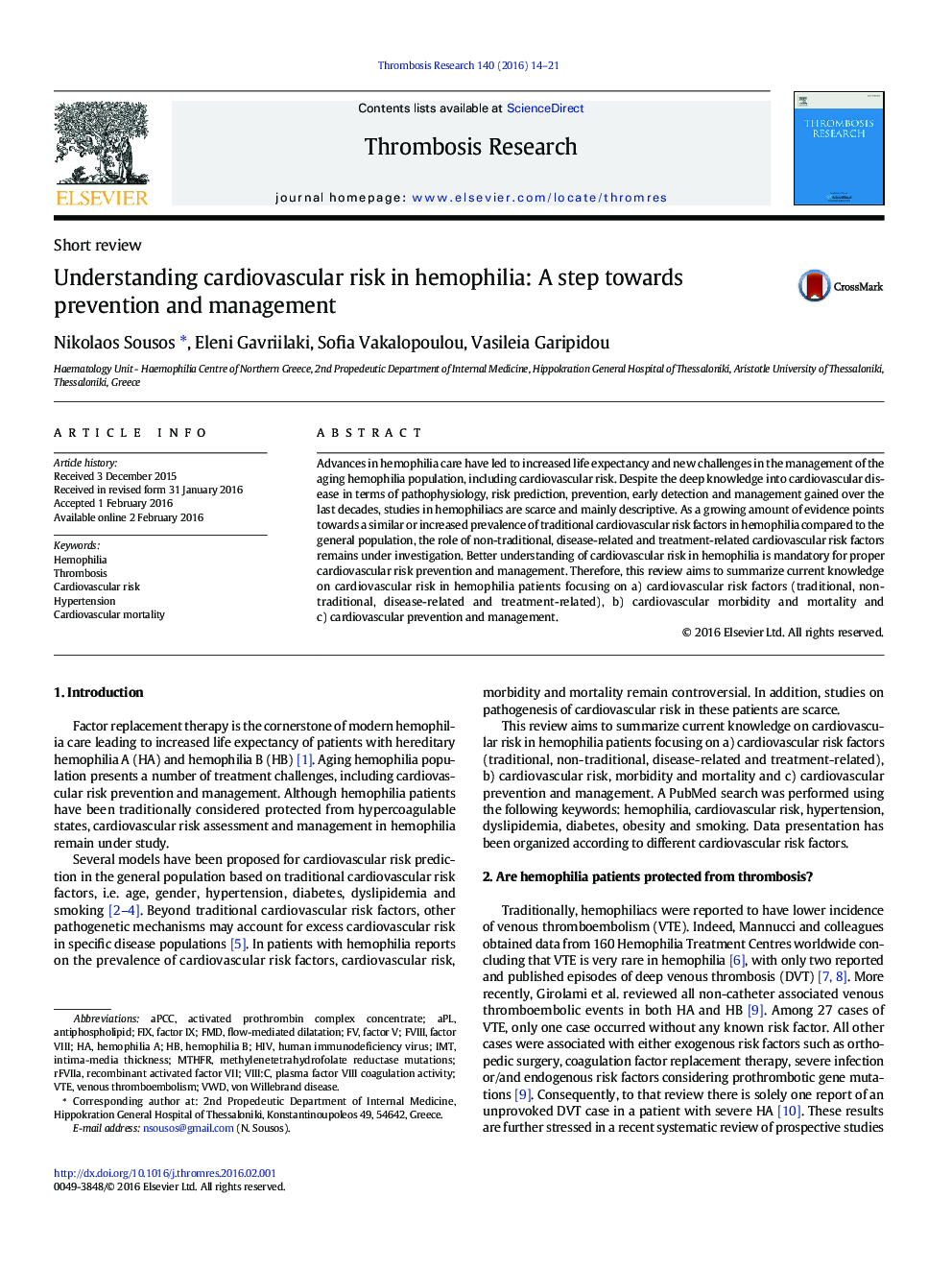| کد مقاله | کد نشریه | سال انتشار | مقاله انگلیسی | نسخه تمام متن |
|---|---|---|---|---|
| 6000529 | 1579203 | 2016 | 8 صفحه PDF | دانلود رایگان |
- New challenges in the management of the aging hemophilia patients include cardiovascular (CV) risk.
- Accumulating data suggest a similar or increased prevalence of traditional CV risk factors compared to the general population.
- Additive non-traditional, disease-related and treatment-related CV risk factors are under investigation.
- The present review summarizes current knowledge on CV risk in hemophilia patients.
- The review focuses especially on a) CV risk factors b) CV morbidity and mortality and c) CV prevention and management.
Advances in hemophilia care have led to increased life expectancy and new challenges in the management of the aging hemophilia population, including cardiovascular risk. Despite the deep knowledge into cardiovascular disease in terms of pathophysiology, risk prediction, prevention, early detection and management gained over the last decades, studies in hemophiliacs are scarce and mainly descriptive. As a growing amount of evidence points towards a similar or increased prevalence of traditional cardiovascular risk factors in hemophilia compared to the general population, the role of non-traditional, disease-related and treatment-related cardiovascular risk factors remains under investigation. Better understanding of cardiovascular risk in hemophilia is mandatory for proper cardiovascular risk prevention and management. Therefore, this review aims to summarize current knowledge on cardiovascular risk in hemophilia patients focusing on a) cardiovascular risk factors (traditional, non-traditional, disease-related and treatment-related), b) cardiovascular morbidity and mortality and c) cardiovascular prevention and management.
Journal: Thrombosis Research - Volume 140, April 2016, Pages 14-21
